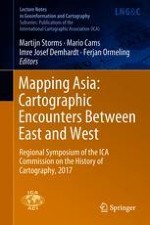2019 | OriginalPaper | Buchkapitel
Jesuit Contribution to the Mapping of the Philippine Islands: A Case of the 1734 Pedro Murillo Velarde’s Chart
verfasst von : Mirela Altić
Erschienen in: Mapping Asia: Cartographic Encounters Between East and West
Aktivieren Sie unsere intelligente Suche, um passende Fachinhalte oder Patente zu finden.
Wählen Sie Textabschnitte aus um mit Künstlicher Intelligenz passenden Patente zu finden. powered by
Markieren Sie Textabschnitte, um KI-gestützt weitere passende Inhalte zu finden. powered by
